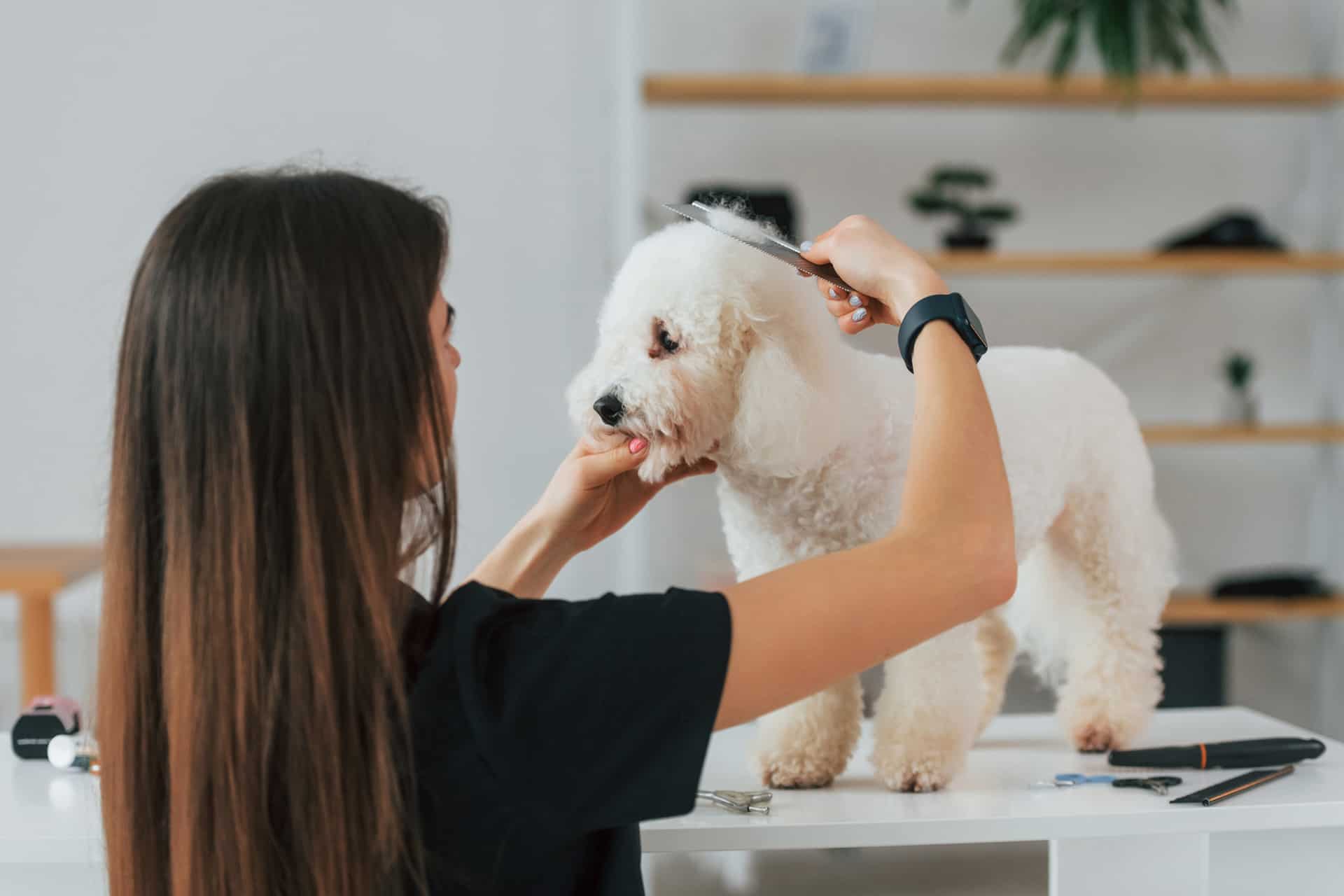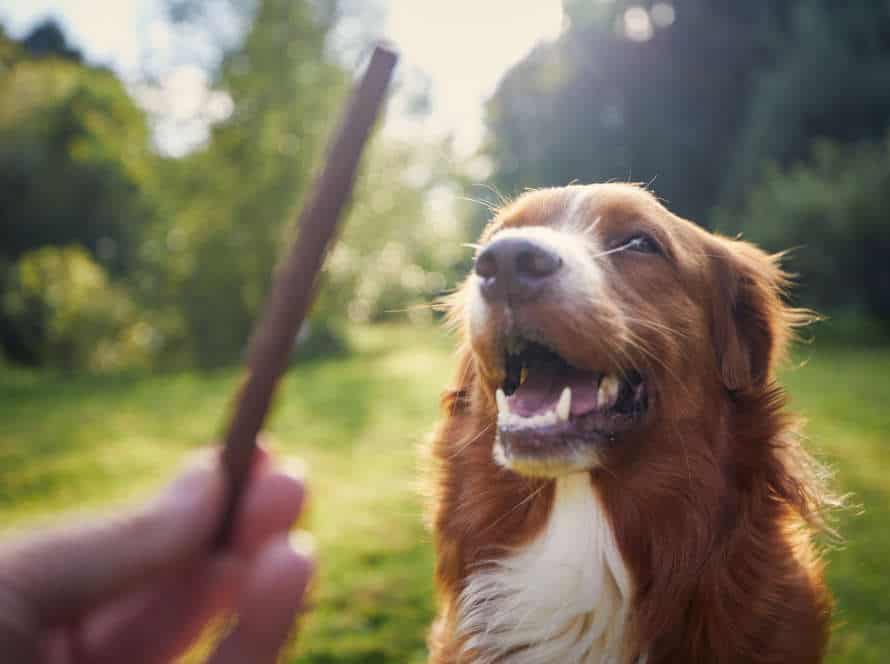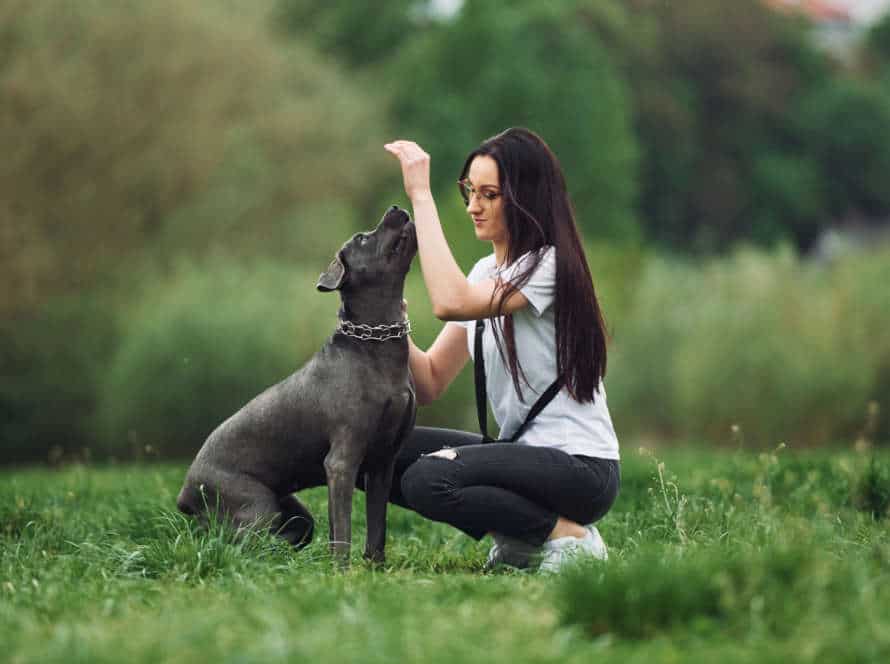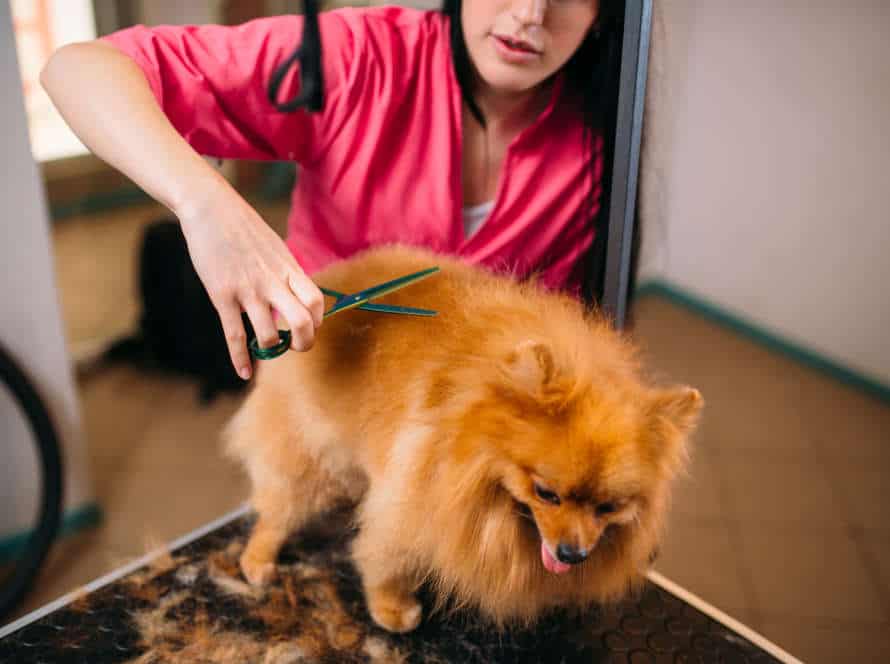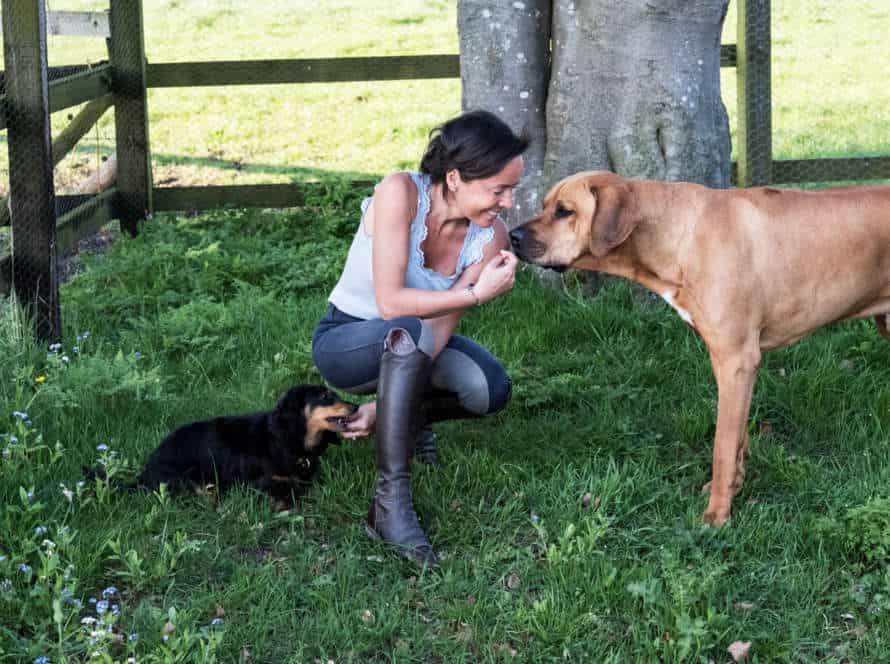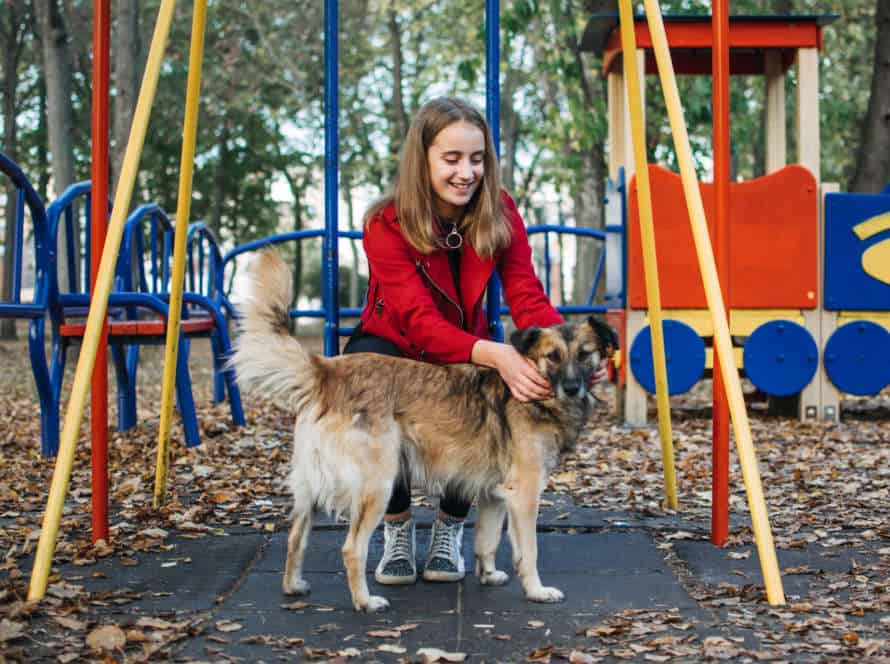How to Groom Your Dog: Tips and Techniques
Grooming your pup is key for responsible pet ownership. With the right tips and tricks, you can make the experience a breeze!
Brushing is a must. Use a slicker brush or comb that’s suitable for your dog’s coat type.
Trim the nails. Use nail clippers made for dogs. Be gentle, and avoid the quick to prevent bleeding.
Bath time! Use dog shampoo with lukewarm water, and keep water out of their ears.
Dry your dog off with a towel or hairdryer on low heat.
Brush your pup’s teeth with a soft-bristled toothbrush and dental paste made for dogs. This will help avoid dental issues in the future.
Regularly grooming your dog can benefit their health and appearance, as well as strengthening the bond between you and your beloved pet.
Tools and Materials You Will Need
Grooming your pup? Fun for both of you! Start with the right tools. You’ll need a grooming brush, de-matting brush, shampoo and conditioner, scissors, and maybe a professional clipper. Knowing what to use is the first step in having a successful grooming session. Enjoy!
Brushes and Combs
Brushes and combs are must-haves for correctly grooming your pup. Different types cater to different coat types. They help to remove dirt, knots, and shed fur. Here are some of the most popular brushes and combs:
- Slicker Brush: Perfect for long-haired breeds. The thin, short wires make it easy to brush without damage.
- Pin Brush: For long, silky coats. The longer, more flexible pins help undo tangles and keep the coat smooth.
- Bristle Brush: For short-haired or smooth coats. Helps spread natural oils for a shiny and healthy coat.
- Dematting Comb: Has sharp blades to remove tough mats or tangles. Be careful when using this – it might hurt your pup!
It’s important to pick the right brush or comb for your doggo’s coat type to keep their skin healthy and irritation-free.
Clippers and Trimmers
Grooming your pup? Clippers and trimmers are must-haves! They’ll help keep your doggy’s coat neat and tidy. Clippers are for cutting the fur to length, while trimmers are for trimming sensitive areas like paws, ears, and face.
When choosing the right tools, consider:
- Power source: Cordless or corded? Cordless gives you more mobility.
- Blade size & type: Different sizes for different fur lengths. Types range from standard, ceramic, to titanium.
- Noise level: Some dogs are sensitive to loud noises, so a quieter clipper or trimmer can make grooming more comfortable.
- Attachment guide combs: These help you get consistent hair lengths and avoid accidental cuts.
Think about these features to find the perfect clippers and trimmers for your furry pal!
Shampoo and Conditioner
Shampoo and conditioner are essential for grooming your dog. They keep their coat clean, soft, and healthy. Plus, they protect them from skin irritation and infections.
Here’s what you need:
- Dog shampoo & conditioner suitable for their coat type, age, and skin sensitivity.
- A tub or a large sink with a non-slip mat or towel.
- Warm water and a handheld showerhead or a pitcher.
- Towels and a blow dryer.
- Brushes & combs suitable for their coat type.
Follow instructions on shampoo & conditioner bottles. Keep it away from eyes, nose, & ears. Praise and reward pup for good behavior.
Pro tip: Don’t use human shampoo or conditioner – it can irritate skin and damage coat.
Brushing Your Dog
Brushing your pup is key to their grooming. It can get rid of dirt, gunk, and extra fur. Also, it lets you check the skin for any issues. Here are some tips for making sure you brush them correctly:
- Remember to distribute their natural oils
- Clean off debris
- Inspect the skin
How Often Should You Brush Your Dog?
Brushing your pup depends on various elements, like your pooch’s breed and coat type, the season, and its activity level. Follow these pointers:
- Short-haired pups: Brush once a week for loose hair and dirt.
- Long-haired pups: Brush every other day to avoid matting and tangles.
- Dogs with thick undercoats: Brush daily during shedding season for loose fur and to prevent matting.
- Pups that spend time outdoors: Brush weekly and check for ticks and other parasites.
Always use a brush that suits your pup’s coat type and be delicate when brushing to avoid causing pain or skin irritation. Brushing your pup on a regular basis not only keeps them clean and healthy, but also deepens the bond between you and your furry buddy.
How to Correctly Brush Your Dog’s Coat
Brushing your pup’s fur is not only important for their hygiene, but also a way to bond with them that can help their physical and mental health.
Here are steps for brushing your furry friend’s coat:
- Pick a brush suitable for their fur type.
- Check for tangles, mats, and any foreign objects in their coat.
- Use a comb to loosen up mats or knots before brushing.
- Start at the head and work your way down to the tail, using gentle yet firm strokes.
- Watch their reaction to make sure they’re not in discomfort or pain.
- Brush weekly to keep their coat healthy and bright.
- Reward them with treats and praise for cooperating!
Brushing Techniques for Different Coat Types
Groom your pup right by learning the brushing techniques for different coat types! Common coat types and their associated brushing techniques include:
- Short & Smooth Coats: Use a soft-bristled brush to clear off any loose hair and dirt. For those with excessive shedding, try a shedding blade.
- Long & Silky Coats: Go for a slicker brush to untangle mats and remove any loose strands. Then comb through with a wide-toothed comb, and finish off with a bristle brush for oil distribution.
- Double Coats: Start off with an undercoat rake to get rid of any loose fur from the undercoat. Follow up with a slicker brush to untangle and remove remaining loose hair from the topcoat.
- Curly Coats: Use a steel comb or slicker brush to detangle mats and take away loose hair. Finish with a bristle brush to spread oils and add shine.
It’s important to brush your pup regularly. This can benefit them in many ways, such as improved health and reduced shedding.
Bathing Your Dog
Bathing your pup is essential for grooming. Use a shampoo that is safe for your doggo’s fur or skin type. Begin with a mild shampoo, then if necessary, switch to a more powerful one for tougher dirt and fur. Here are some tips and tricks on how to correctly bath your furry friend.
How Often Should You Bathe Your Dog?
Your pup’s bathtime frequency depends on various aspects, including breed, coat length and activities. Generally, you should bathe dogs once every three months. However, some need more. Here are a few factors to consider:
- Coat & Skin: Dogs with long, dense coats or oily skin may require more baths to avoid tangles and inflammation.
- Activity Level: If your pooch plays outdoors in sand or water, it may need more baths.
- Medical Conditions: For dogs with allergies, infections or parasites, more baths may be necessary for treatment.
If you need to bathe your pup more, pick a mild, moisturizing shampoo and rinse properly to avoid skin irritation.
How to Give Your Dog a Bath
Giving your pup a bath is an important part of grooming. While it can be tough to get them in the tub, here are some tips to make it easier:
- Choose where to bathe: Pick a spot with hot water and no slippery surfaces.
- Gather supplies: Get shampoo and conditioner for dogs, non-slip mats or towels and a cup or showerhead to rinse.
- Brush the doggy: Before the bath, brush out any tangles to make washing simpler.
- Wet: Use warm water and avoid head and face.
- Shampoo: Put a little shampoo and lather up the fur. Make sure not to get it in the eyes or ears.
- Rinse: Use a cup or showerhead to rinse, and no soap residue should remain.
- Dry: Towel or air dry and keep them warm to avoid ear infections.
- Reward: Praise and treat your furry friend for good behavior during bathtime.
Tips for Making Bath Time Easier
Bathing your furry friend can be quite a challenge. Here are some tips to make it easier for both of you:
- Gather all the items you need ahead of time, like towels, shampoo and brushes.
- Brush your dog’s coat before the bath to get rid of matted fur.
- Use a mild shampoo and warm water. Take care not to splash it in their eyes, ears or nose.
- Talk in a calm, reassuring tone to soothe them during the bath.
- Don’t use high-pressure water, it’s too intense for most dogs.
- Rinse thoroughly and make sure any residue of shampoo is gone, or else it may irritate their skin.
- Dry their fur with a towel and if you want, you can use a hair dryer on low heat to speed things up.
- Treat and praise your pup to reward them for behaving well and make the next bath smoother.
Trimming and Clipping Your Dog
Grooming your pup is vital for keeping them looking and feeling their best. Trimming and clipping is a major part of grooming. Long-haired breeds and short-haired dogs alike need trimming and clipping. Here are some tips and techniques for trimming and clipping your pup!
Getting Started with Trimming and Clipping
Trimming and clipping your pup is a must for grooming! It’s easy to get started. Here are some steps to help you:
- Brush the coat to remove any knots or mats.
- Get quality scissors and clippers for dogs.
- Work in a well-lit area, free of distractions.
- Give treats and rewards to make it stress-free.
- Take your time and work carefully – safety first!
Pro tip: If you’re new to trimming, ask a professional groomer for advice. They can walk you through the process.
Techniques for Safely Trimming Your Dog’s Fur
Grooming your pup’s fur is a must. But, if you lack experience it can be daunting. Here are some tips for trimming your dog’s fur at home:
- Start by brushing – get rid of tangles or matts.
- Use scissors or clippers made specially for canine grooming.
- For areas like the muzzle, paws and tummy, use scissors to cut gradually following the body’s natural shape.
- Clippers are best for larger areas like the back and sides. Put on a clipper guide attachment to keep the trim even.
- Go slow and make sure your dog is comfortable throughout.
- Reward them with treats and affection to make it a more positive experience.
- If in doubt, it’s best to have a professional groomer do it.
What to Do if You Accidentally Nick Your Dog’s Skin
Accidentally cutting your pup’s skin while trimming or clipping can be painful for both of you. But, you can take some steps to stop any discomfort and avoid more harm:
- Apply Pressure: Cover the area with a clean towel or cloth. This’ll help stop the bleeding and stop infection.
- Clean the Wound: Use an antiseptic or warm water and mild soap to clean the wound. This removes bacteria or debris which could cause infection.
- Cover it Up: Cover the wound with a sterile gauze pad and medical tape. This will protect it from irritation and stop your pup from licking or scratching it.
- Watch for Infection: Keep an eye on the wound for signs of infection, such as fever, redness, discharge, or swelling. If you notice any of these, contact your vet right away.
Remember to be gentle and patient during grooming to keep accidents from happening again.
Cleaning Your Dog’s Ears
Cleaning your pup’s ears is a major part of grooming and keeping them healthy. Not all dogs like having their ears cleaned though, so be gentle and patient. Here are some tips to help with the process:
How to Tell if Your Dog’s Ears Need Cleaning
Cleaning your pup’s ears is an important part of grooming. But how to tell if your dog’s ears need cleaning? Look out for signs! Foul smell coming from their ears? Constant scratching and rubbing? Unusual discharge? Redness or swelling? Tilting the head or loss of balance? Loss of hearing? If so, clean their ears right away. This will stop bacteria and fungi from growing inside, which can cause infections. Clean once monthly as a rule of thumb. For dogs with ear infections, clean more often. Just use dog-specific solutions and methods. Human products can harm your pet.
Pro tip: if not sure what to do, or if symptoms are serious, ask the vet for help.
Preparing to Clean Your Dog’s Ears
Clean your pup’s ears for good health! Here are the steps:
- Pick a vet-approved cleaning solution.
- Gather cotton balls/gauze, the solution, and treats.
- Choose a calm time/place for your dog. After play/mealtime is best.
- Be gentle – use a soft voice & touch.
- Stop if your pup gets agitated.
Pro Tip: Regular ear cleaning can prevent ear infections.
Techniques for Cleaning Your Dog’s Ears Safely and Effectively
Clean your pup’s ears! It’s an important part of grooming. Be careful not to hurt them. Here’s the steps:
- Gather what you need: cotton balls/pads, cleaning solution for dogs, and treats for good behavior.
- Hold your pup comfortably and lift their ear flap to expose the canal.
- Use a moistened cotton ball with the solution to wipe the inside of the flap and canal gently.
- No Q-tips, they can push debris too deep and hurt your pup.
- If you see discharge, an odor, or they seem in pain, see the vet.
- Reward and praise your pup throughout, to make it a positive experience.
Trimming Your Dog’s Nails
It’s essential to groom your pup regularly by trimming their nails. This safeguards their paws and stops them from becoming too lengthy, which can be painful or dangerous. Here, we’ll look at tricks, skills, and tools to accurately and safely cut your dog’s claws.
How to Tell if Your Dog’s Nails Need Trimming
Trimming your pup’s nails is essential for keeping them healthy. Here are five signs to watch for that indicate they need a trim:
- A clicking sound when they walk on hardwood floors.
- Visible nails poking out from their paw pads.
- Nails so long they curl over.
- Difficulty walking.
- Excessive paw licking.
Trim nails carefully to avoid causing pain or injury. Get your pup’s nails trimmed and keep them healthy!
Preparing to Trim Your Dog’s Nails
To have a successful, stress-free grooming session, prepping to trim your pup’s nails is key. To make it easier for both you and your furry pal, proper prep ensures they’re calm and comfy. Here are a few tips to follow before trimming:
- Choose an area well-lit and cozy. Have all the tools ready, including clippers and styptic powder.
- Acclimate your dog to the process. Handle their paws and nails regularly. Give treats and praise as rewards for a positive association.
- Know the anatomy of your pup’s nails. This will help avoid cutting the quick (the sensitive, blood-rich part).
- Start slow. Cut small amounts at a time. Work your way up to the desired length. Avoid causing your pup discomfort.
By following these steps, the nail trimming experience will be less daunting and more manageable.
Techniques for Trimming Your Dog’s Nails Safely and Effectively
Trimming your pup’s claws is key for keeping their well-being and avoiding harm or disease. However, it can be a tough job for pet owners to do securely and productively. Here are some tips to trim your doggy’s nails carefully and efficiently:
- Get your dog used to the nail-trimming activity and handle their paws often to decrease fear.
- Utilize sharp and high-quality dog nail clippers to get a clean cut without crushing or splitting the nail.
- Spot the quick, which is the nerve and blood vessels in the nail. Dodge cutting into the quick since it can cause pain and bleeding.
- Make multiple small cuts rather than one big cut to decrease the danger of cutting into the quick.
- Give treats and positive reinforcement to reward your pup for good conduct and make the experience more pleasant.
Keep in mind that if you are doubtful or uneasy trimming your dog’s nails, it is always better to get help from a professional groomer or vet.
Frequently Asked Questions
1. How often should I groom my dog?
It depends on your dog’s breed and coat type. Dogs with longer coats and those that shed often need to be groomed more frequently, ideally once a week. Short-haired dogs that don’t shed as much can be groomed every few weeks.
2. How do I choose the right grooming tools for my dog?
When it comes to grooming tools, it’s important to choose the right ones for your dog’s coat and grooming needs. Some basic tools include a slicker brush, comb, nail clippers, and shampoo. Consult with a professional groomer or veterinarian to find the best tools for your dog.
3. Can I groom my dog at home, or should I bring them to a professional groomer?
While you can certainly groom your dog at home, taking them to a professional groomer is recommended, especially if you have a more complex grooming task or are unfamiliar with basic grooming techniques. Professional groomers have the experience and tools to handle any grooming task.
4. What are some tips for keeping my dog calm and comfortable during grooming?
To keep your dog calm during grooming, start by getting them used to being touched and handled. Use positive reinforcement, like treats and praise, to reward good behavior. Play soft music or use calming sprays to keep them relaxed. And always take breaks if your dog seems overly stressed or anxious.
5. How do I groom my dog’s ears?
When it comes to grooming your dog’s ears, it’s important to be gentle and avoid getting water or shampoo inside. Use a cotton ball and ear cleaning solution to gently clean the outer ear. Trim any hair around the ear opening carefully, and avoid going too deep into the ear canal.
6. How often should I bathe my dog?
Most dogs don’t need to be bathed more than once every 3 months, unless they get very dirty or have an odor. Over-bathing can strip their skin of natural oils and lead to dryness and irritation. Always use a dog-specific shampoo, and avoid getting water or shampoo in their eyes, ears, or nose.

